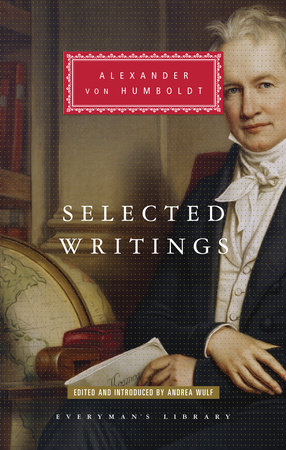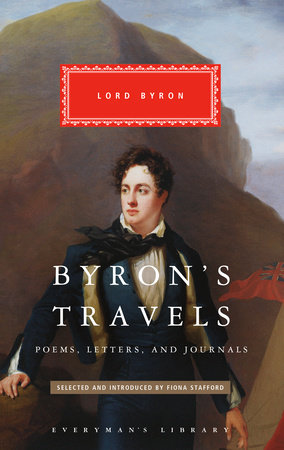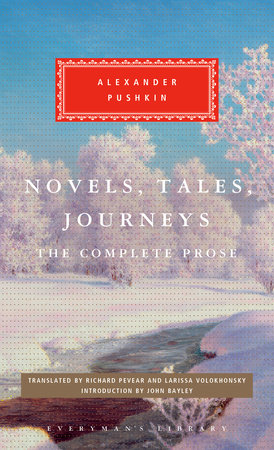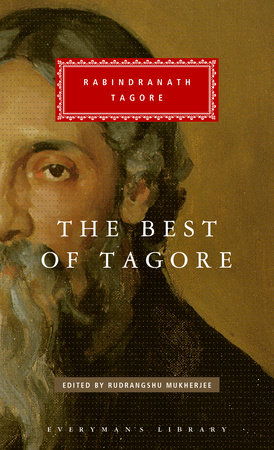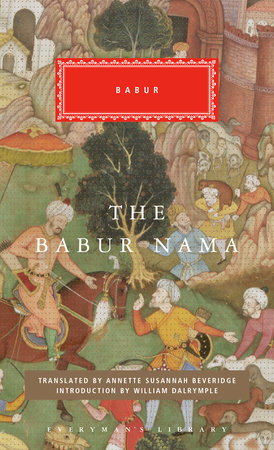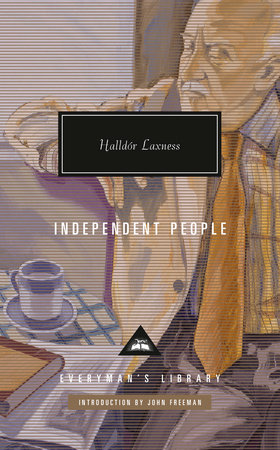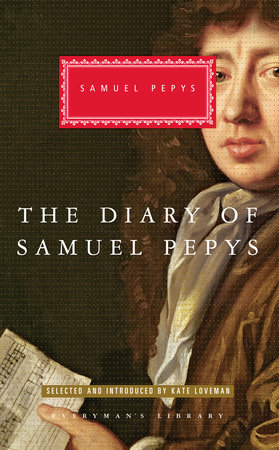Excerpt
Selected Writings of Alexander von Humboldt
From the Introduction by Andrea Wulf
On 14 September 1869, the centennial of the birth of German scientist Alexander von Humboldt was celebrated across the world. Thousands of people came together in Europe, Africa, Australia and in the Americas. There were parties in Buenos Aires and Mexico City, as well as in Melbourne and Adelaide. In Moscow Humboldt was hailed as the ‘Shakespeare of sciences’ and in Alexandria in Egypt fireworks illuminated the sky. In Berlin 80,000 people trudged through torrential rain to celebrate the most famous resident of their city. Some of the greatest festivities were organized in the United States – from San Francisco to Philadelphia, from Chicago to Charleston. In New York 25,000 people marched along Manhattan’s cobbled streets which were lined with flags and colourful bunting. The crowds assembled in Central Park to unveil a Humboldt bust which still stands today opposite the Natural History Museum at the Naturalists’ Gate on Central Park West and 77th Street. Humboldt’s fame, the
Daily News in London reported, was ‘in some sort bound up with the universe itself ’.
Almost forgotten today – at least in the English-speaking world – Humboldt was described by his contemporaries as the most famous man in the world after Napoleon. His name still lingers everywhere from the Humboldt Current, which runs along the west coast of South America, to the Humboldt penguin and a fierce six-foot giant squid. There are towns, rivers, and mountains across the globe that carry his name. There is the Mare Humboldtianum on the moon, the Humboldt Glacier in Greenland and mountain ranges in New Zealand, South Africa and China. Even the state of Nevada was almost called Humboldt when its name was debated in the 1860s. More places, plants and animals are named after Humboldt than anyone else.
Ralph Waldo Emerson called him ‘one of those wonders of the world’ and Thomas Jefferson described him as ‘one of the greatest ornaments of the age’. Johann Wolfgang von Goethe, Germany’s greatest poet, declared that spending a few days with Humboldt was like ‘having lived several years’, and Charles Darwin believed that the German explorer was ‘one of the greatest men the world has ever produced’. Humboldt inspired scientists, poets, artists, politicians and revolutionaries. Simon Bolıvar, the man who liberated the Spanish colonies, admired him, and the American painter Frederic Edwin Church followed Humboldt’s footsteps through South America. Walt Whitman wrote his celebrated poetry collection
Leaves of Grass with a copy of one of Humboldt’s books on his desk and the Romantic poet Robert Southey said that he was ‘among travellers what Wordsworth is among poets’.
*
So, who was this man? Alexander von Humboldt was a visionary scientist and explorer who changed the way we understand nature. Born in 1769 into a wealthy Prussian aristocratic family, he was daringly adventurous and his five-year voyage of exploration to Latin America (1799–1804) shaped his life and made him legendary across the world. He and his older brother Wilhelm were brought up on the family estate at Tegel, just outside Berlin. It was an unhappy childhood, Alexander von Humboldt later said. Their beloved father died when they were young and their emotionally cold mother never showed much affection – but she did provide the best education then available in Prussia. The boys were tutored by several Enlightenment thinkers who instilled in them a love of truth, liberty and knowledge. But Alexander escaped the classroom whenever he could to ramble through the countryside, collecting and sketching plants, animals and rocks. When he returned with his pockets full of insects and plants his family nicknamed him ‘the little apothecary’. He dreamed of adventures in faraway countries and felt stifled at ‘Castle Boredom’, as he called Tegel, but Marie Elisabeth von Humboldt made it clear that she expected her sons to become civil servants in the Prussian administration.
In 1791, after completing his studies in economy, mathematics, languages and finance, Alexander von Humboldt enrolled at the prestigious mining academy in Freiberg, a small town near Dresden. It was a compromise that would prepare him for a career in the Prussian Ministry of Mines – to appease his mother – but it allowed him to indulge his interest in science and geology. He was curious and restless – impelled by a ‘perpetual drive’, he wrote, as if chased by ’10,000 pigs’ – but deeply unhappy. He travelled across Europe, climbed the Alps, experimented with so-called ‘animal electricity’, investigated mines, examined plants and spent many weeks in Jena with Goethe. The time with Goethe, Humboldt later recalled, ‘affected me powerfully’ – it changed him from being a scientist who based his research on purely empirical and rational methods to one who believed that imagination and emotional responses were as important, and equipped him with ‘new organs’ through which to see and understand the natural world.
In 1796, Marie Elisabeth von Humboldt died but neither Alexander, nor his brother Wilhelm went to her funeral. Four weeks later, Alexander was talking about his ‘great voyage’. He was rich, independent, and couldn’t wait to travel the world. It took a while to organize the expedition but in June 1799 Humboldt and his travel companion the French botanist, Aime Bonpland, left Europe with the permission of the Spanish king to explore the Spanish colonies in South America. For five years they travelled through what is today Venezuela, Cuba, Colombia, Ecuador, Peru and Mexico – with a brief stopover in the United States to meet Thomas Jefferson on their return to Europe.
During those five years Humboldt paddled deep into the rainforest where few white men had ever gone and climbed the highest volcanoes in the Andes. He risked his life many times – when he experimented with electric eels in the great plains of Venezuela or when he clung to narrow ledges inside craters to collect sulfuric air samples. He drank the deadly curare poison at the Orinoco, swam next to crocodiles and boas, and was almost killed by a jaguar. He scoured the archives in Mexico City and Havana, climbed majestic Chimborazo which was then believed to be the highest mountain in the world, and measured the cold ocean current which would later carry his name. He collected indigenous languages, sketched Inca ruins, copied Aztec manuscripts and discovered the Brazil nut. He (and Bonpland) collected 60,000 plant specimens, and Humboldt drew the most accurate maps of South America ever made, filled 4,000 diary pages, produced hundreds of sketches and drawings, and conducted tens of thousands of astronomical, geological and meteorological observations. Charles Darwin called him the ‘greatest scientific traveller who ever lived’.
As Humboldt travelled across South America, he began to see nature in a completely new way – and he saw connections everywhere. His mind, his brotherWilhelm believed, was made ‘to connect ideas, to detect chains of things’. In the jungle he observed jaguars chasing capybaras, and at sea he recorded how flying fish escaped the dolphins’ sharp teeth, only to be caught mid-air by albatrosses – later noting how plants and animals ‘limit each other’s numbers’ (an idea which Charles Darwin underlined in his copy of Humboldt’s book). Humboldt talked about nature as a global force where everything was connected from the smallest insect to the tallest tree. ‘In
this great chain of causes and effects’, he said, ‘no single fact can be considered in isolation.’ Instead of understanding flora and fauna in taxonomic units as other scientists did, he saw nature as a living organism pulsating with life, and pre-dated James Lovelock’s Gaia Theory by more than a century. ‘Nature is a living whole’, Humboldt said, ‘not a dead aggregate.’
Humboldt knew that travelling provided the knowledge that was needed to understand the world. Scientists had to look at flora, fauna, rock strata and climate globally, he insisted. Failure to do so would make them like those geologists who constructed the entire world ‘according to the shape of the nearest hills surrounding them’. As Humboldt explored the world, he collected the data and impressions that made him realize that humankind was destroying the environment. Humboldt noted how mining exploited the land and the indigenous people; how huge swathes of forests had been destroyed to make way for plantations; how irrigation desiccated the soil and how ruthless pearl fishing had depleted the oyster stocks at the Venezuelan coast. Humboldt already predicted harmful human-induced climate change in 1800 – because he compared and connected what he saw. He warned of the devastating consequences of monoculture, deforestation and irrigation. He was a prescient environmentalist who talked of ‘mankind’s mischief . . . which disturbs nature’s order’. His diary entry in November 1801 revealed that he worried about a future in which humankind might expand into space. If that happened, he wrote, we would take our lethal mix of vice and greed which already had left earth ‘barren’ and ‘ravaged’, and spread it across other planets.
After his expedition Humboldt moved to Paris where he lived for more than twenty years. He became the centre of scientific enquiry – he experimented, gave lectures, rushed to scientific meetings and published many of his books. He was so famous that cab drivers didn’t need an address, just the information ‘chez Monsieur de Humboldt’, to know where to take visitors. But in 1827 he reluctantly moved to Berlin, a city he hated. Having spent his fortune on his expedition as well as on hundreds of lavish engravings and maps that illustrated his many publications, Humboldt was desperately short of money. The Prussian king, Friedrich Wilhelm III, had paid him an annual stipend for more than two decades and insisted on his return. The king had run out of patience and wrote to Humboldt that ‘you must already have completed the publication of the works, which you believed could only be accomplished satisfactorily in Paris’. Humboldt, by now ‘poor as a church mouse’, as he admitted, didn’t have much of a choice.
He still managed to have some fun, though. Two years later, in 1829, he went on another expedition – this time to Russia, with all expenses paid by the Russian tsar. At the age of sixty, Humboldt travelled 10,000 miles in six months – crossing the border into China and Mongolia as well as racing through anthrax-infested steppes in Siberia. He was as restless as he had been as a young man. For the remaining thirty years of his life, Humboldt was based in Berlin and employed as the king’s chamberlain. It was the beginning of what Humboldt called his ‘swinging of a pendulum’ – a life in which he chased the king’s movements from one castle to the next summer residence and back to Berlin, always on the road and always loaded with manuscripts and boxes full of notes. The only time he had for himself and to write his books was between midnight and three o’clock in the morning.
By the end of his life, he received some 3,000 letters a year and welcomed a never-ending stream of visitors. He had become the greatest attraction of Berlin and for young scientists it was a rite of passage to meet the great Humboldt. He was so famous that his portrait was placed in the Great Exhibition in London and his birthday was celebrated as far away as Hong Kong. Everybody knew Humboldt. As one American journalist claimed: ‘Ask any schoolboy who Humboldt is, and the answer will be given.’
Humboldt died on 6 May 1859, just a few months before his ninetieth birthday. As the news of his death travelled across the world, people everywhere mourned ‘the great, good and venerated Humboldt’, as the United States ambassador to Prussia said. Eulogies were given from Berlin to Mexico City. He had been, the Prussian king had once said, simply ‘the greatest man since the Deluge’.
*
Since I published my book
The Invention of Nature in 2015, my readers have asked me often which of Humboldt’s books I would recommend. There is no easy answer to this question. Humboldt was such a prolific writer that not even he himself knew exactly what was published when and in which language. It doesn’t help that some of his books were published in different formats and editions, or as part of a series, but then also separately as single volumes. The chance to bring some of his writing together in one volume has been a wonderful experience. It has been a privilege to make this selection – though I have to admit that it hasn’t been easy. There is so much that couldn’t be included here but I tried to choose sections and passages that illustrate the breadth of Humboldt’s interests, while at the same time focusing on the books which he wrote for the general reader rather than scientific colleagues.
Prose was for Humboldt as important as the content. When he wrote his book
Views of Nature, for example, he insisted that his publisher did not change a single syllable because otherwise the ‘melody’ of the sentences would be destroyed. For Humboldt, nature was a painting drawn on a canvas of empirical observation, but infused with emotions, imagination and poetic descriptions. He wrote of leaves that unfolded to ‘greet the rising sun like the morning song of the birds’ and of monkeys that filled the jungle with ‘melancholy howling’. In the mists at the rapids of the Orinoco, rainbows danced in a game of hide-and-seek – ‘optical magic’, he called it. ‘What speaks to the soul’, Humboldt wrote, ‘escapes our measurements.’
This new nature writing was so seductive, Goethe told Humboldt, ‘that I plunged with you into the wildest regions’. Henry David Thoreau devoured Humboldt’s books and found an answer to his dilemma on how to be a poet
and a naturalist.
Walden would have been a very different book without Humboldt. John Muir, father of the national parks in the United States, read Humboldt’s books with a pencil in hand – underlining and writing as he went along, inspired by Humboldt’s revolutionary ideas about the role of forests in the ecosystem. The French writer Franc¸ois-Rene de Chateaubriand thought Humboldt’s writing was so extraordinary that ‘you believe you are surfing the waves with him, losing yourself with him in the depths of the woods’, and Jules Verne mined Humboldt’s descriptions of South America for his
Voyages Extraordinaires series. Even Captain Nemo in his famous
Twenty Thousand Leagues Under the Sea owned the complete works of Humboldt.
. . .


